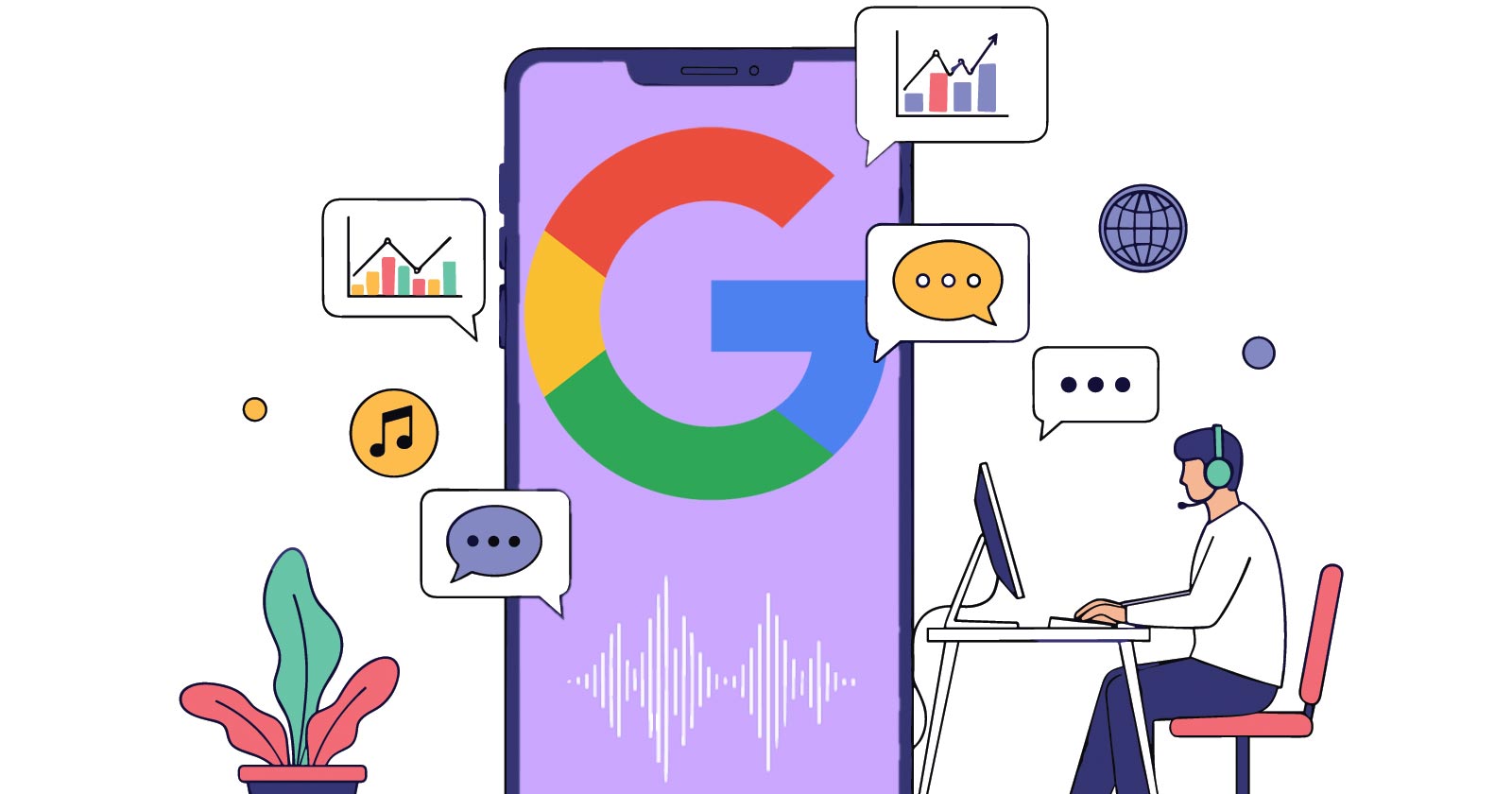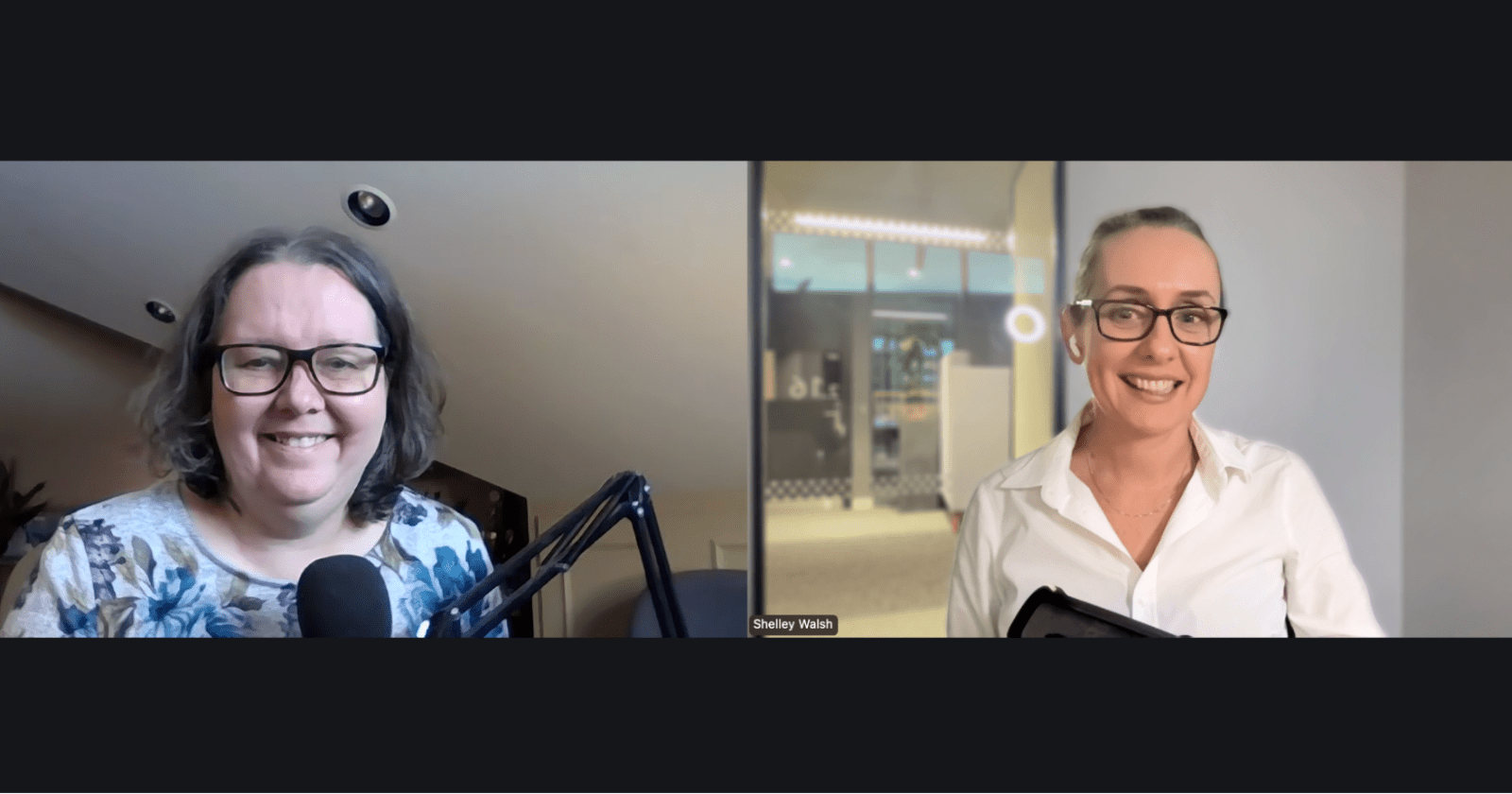This year has been a continuation of learning and understanding about how AI impacts our industry. It’s been less about the chaos of the initial disruption and more about “how do we leverage this?”
My belief is that SEO is a practice that needs to be adaptable to the end goal and not fixed to any predetermined notions centered around Google, ranking, or keywords. The foundation of SEO is about making yourself visible online wherever your audience can find you.
“S’ is for “search engine,” but one of my favorite phrases from the year is from Ashley Liddell, who said “search everywhere optimization,” and that is the perfect approach for the mindset needed to continue in the next level of SEO.
It might be TikTok, YouTube, Google, ChatGPT, or Reddit. Most likely, it’s a combination of all of these.
For the technical side of SEO, it’s fundamental that your pages can be accessed by all search engines and machines. For the content side of SEO, you need to be creating content experiences that can be cited by search engines and machines. And everyone should be thinking about the bottom line: Does this align with the defined business outcome for my client/brand/company? Show me the money.
One critical area I wouldn’t overlook is agentic AI and the development of closed systems completing actions for users. Think booking a holiday, personal shopping for a styled wardrobe, or buying your food shop based on a specific diet. When that happens, you need to ensure you are in the game and included in those closed spaces. Start learning about this now.
As the AI future is coming fast, get ready and go with it rather than resisting it. 2026 is the watershed where you need to get on board to stay in the game.
At Search Engine Journal, we showcase some of the best SEO minds in the industry, and in our usual tradition, we asked 20 of the best practicing SEO experts, including many of our contributors, “In 2026, what should SEOs focus on to maintain visibility and achieve measurable results?”
(Editor’s Note: The following are not in any order of preference and are displayed in the order of who responded first.)
How To Maintain Visibility Online In 2026
1. Be Mentioned In the Right Places
Kevin Indig, Growth Advisor
In 2026, visibility is the result of having the right content, engaging on the right channels, and being mentioned in the right places.
The right content is a mix of hyperlong-tail articles/landing pages tailored to your audience(s) and based on your unique positioning and data stories. People prompt 5x longer than they search on Google, so you want to be the best result for their specific context. LLMs also love fresh, unique datapoints, so you want to create research-driven content.
The right channels are Google, ChatGPT, Reddit, Quora, review sites, LinkedIn, and niche forums. Those are not just the most cited platforms in LLMs but also in Google Search. But being present here takes an engagement strategy rather than an SEO approach.
The right places to be mentioned are authoritative publishers and review sites in your industry. LLMs seem to rely heavily on mentions from other (relevant) sites, so you have to be present in context (surrounding words) that reflect your positioning and market position.
→ Read More: The Alpha Is Not LLM Monitoring
2. We Have To Do More Than Just Appease Google
Cindy Krum, CEO & Founder, MobileMoxie
We have to do more than just appease Google.
Now, to get visibility in all the places where it is needed, having a good website, with high-quality, indexable content, is table stakes; it is the bare minimum, and likely not enough.
For years, Google’s algorithm focused on using content and links to a site to evaluate that particular site, and rank it. AI search utilities and LLMs work very differently. They were designed to find a consensus and synthesize it, and they are looking across all the information that they have access to, to do it.
This means, if you are just relying on your website to create your visibility online, it will not be enough. There is no consensus and minimal synthesis from just one site.
Your branding message needs to be widely distributed across the web to create a consistent but discernibly unique branding message.
→ Read More: Google’s AI Search Journeys Are Reshaping SEO With Cindy Krum
3. Optimize For Systems That Read Like Machines
Duane Forrester, Founder and CEO, UnboundAnswers.com
In 2026, SEOs need to treat visibility as something earned through retrieval, not ranking.
Focus on how content is chunked, cited, and most importantly, trusted by AI systems.
Audit what gets surfaced inside chatbots and answer engines, not just in SERPs.
Build authority signals machines can verify: structured data, consistent sourcing, and entity clarity.
Use embeddings, vector search, and retrieval testing to understand how meaning (not keywords) drives exposure.
Replace “optimize for Google” with “optimize for systems that read like machines.” Your goal isn’t a blue link anymore. It’s being the trusted source those systems turn to when humans ask questions. Trust, in 2026, is paramount.
→ Read More: Ex-Microsoft SEO Pioneer On Why AI’s Biggest Threat To SEO Isn’t What You Think
4. Be Retrieved, Cited, And Trusted Wherever Users Search
Carolyn Shelby, Founder, CSHEL Search Strategies
In 2026, SEOs need to refocus on clarity, consistency, and comprehension.
Every channel that describes your brand – your site, feeds, listings, and profiles – must tell the same story, in the same words, in a way both humans *and machines* can understand. That means cleaning up fragmented site structures, removing “hidden” or toggle-buried information, and ensuring the important facts live on the page in visible text. (Note, I did not say Schema doesn’t matter, but I am saying that there are situations where the Schema that is in the JSON-LD is NOT being read, and for those times, it is important that you have valuable product specs and data ON the page, in visible text, and not hidden behind a tab or in a toggle.)
You won’t be penalized or hurt yourself in Google or Bing by *also* optimizing for the lowest-common-denominator crawlers – but you will lose out on that extra visibility if you ignore them. Build pages that are fast (LLMs have a short attention span), crawlable, and semantically clear. Make sure your product, pricing, and positioning statements are consistent across every surface.
The goal isn’t *just* to rank anymore (though ranking is still a necessary first step in most cases). It’s to be retrieved, cited, and trusted wherever users search – whether that’s Google, Bing, or an LLM.
→ Read More: Why AI Search Isn’t Overhyped & What To Focus On Right Now
5. Visibility Will Depend On Agentic Readiness
Andrea Volpini, Co-Founder and CEO, WordLift
In 2026, we are finally designing for the Reasoning Web, where agents will read, decide, and act on our behalf, and SEO becomes the discipline of making these systems effective. Visibility will depend on agentic readiness: clean structured data, stable identifiers, precise ontologies, and knowledge graphs that let agents resolve entities, compare offers, execute tasks, and learn from results.
This is a semantic shift: not simply about being “mentioned” in AI Overviews or ChatGPT, but about exposing products, content, and services as machine-operable assets through feeds, APIs, and tools that make agents smarter every time they interact with us.
The brands that let agents run the show, safely and verifiably, will own the next chapter of search.
→ Read More: How Structured Data Shapes AI Snippets And Extends Your Visibility Quota
6. Search And Product Are Intimately Connected
Ray Grieselhuber, Founder & CEO, DemandSphere
The most important thing, in our view, is understanding that AI search is ubiquitous now across three core experiences: SERPs, LLMs, and agentic experiences.
For the first two, SERPs and LLMs, there is a lot of overlap because they rely on a shared search index (Google in most cases), but the way in which the retrieval process works across these two experiences varies widely. This is why we are hearing that everyone’s No. 1 problem is getting good data, so spend time to make sure your monitoring and data pipelines are accurate and fine-tuned.
For the agentic experience, it’s still early but you should be thinking about how your product strategy will intersect with feeds and APIs (and new, related protocols like MCP). Search and product are intimately connected going forward, and the real ones will know that they always have been.
→ Read More: AI Platform Founder Explains Why We Need To Focus On Human Behavior, Not LLMs
7. Have A Relentless Focus On Being The Best
Barry Adams, Polemic Digital
Whatever you do, don’t lose your mind to the AI hype and try to radically reinvent your SEO efforts. Yes, it will be tougher to grow traffic and revenue from search, but too many SEOs have been coasting along and relying on Google’s own growth to fuel their figures. Now that clicks from Google have stagnated, you’ll need to be smarter about your SEO.
Spend less time and effort on “busywork,” those minor little things that don’t bring any measurable improvement to your traffic. Do the stuff that actually works. Don’t compromise on quality, have a relentless focus on being the best, and make sure you capitalize on your site’s strengths and eradicate its weaknesses.
Sites that are significantly suboptimal, either technically or editorially, will simply not succeed. You have to be all-in on search, without cutting corners and “that will do” concessions. Anything less than that and you will end up on the wrong side of the zero-sum game that Google search has become.
→ Read More: AI Survival Strategies For Publishers
8. Focus On Quality And Conversion Over The Quantity Of Content
Lily Ray, Vice President, SEO Strategy & Research, Amsive
For many years, I’ve answered this question with some version of “focusing on E-E-A-T,” and believe it or not, I think this answer *still* applies in 2026 with the rise of AI search.
Why? Because being mentioned in AI search is all about reputability, experience, and trust. The more your brand is well-known and well-respected in your industry, the more likely LLMs will be to cite you as a trusted and recommended brand. This requires earning mentions and positive reviews in all the places where it matters; having a well-known and well-respected team of individuals who contribute authentic, expert insights into the brand’s content, etc.
As homogenous, AI-generated content floods the internet, users will continue to want to follow real human creators engaged in honest and authentic conversations. Also, focus on the quality and conversion potential of content over the quantity of content, as the latter can cause major SEO headaches over time.
→ Read More: The Role Of E-E-A-T In AI Narratives: Building Brand Authority For Search Success
9. Maintain A Strong Focus On Retrieval Systems And Search Overall
Pedrio Dias, Technical SEO/AI Discoverability Consultant, Visively
I believe that, in the current scenario where a significant amount of new (AI) technologies have been introduced between users and how we interact with the web, and are currently being seen through a disruptive lens, it’s more important than ever to maintain objectivity and pragmatism in our approach to organic visibility as a whole, and search in particular. As professionals, we need to understand in depth the changes that we’re being faced with, both from a technical point of view, but also (and maybe more importantly) from a behavioral point of view.
It’s tempting to cling to old habits and metrics to chase around, instead of assessing if and how we need to rework our strategies and tactics. We’re currently being bombarded with an insane amount of tools claiming to “give you insights into AI answers” and promising that they can give you directional “data” – and in some cases even bold claims of outcomes – but we haven’t even started to understand if any kind of optimization can be performed on AI, or even if inference can be influenced in any controlled and desirable way. So far, everyone is mostly just poking around, guessing, and hoping.
So, that said, in 2026, I believe SEOs should maintain a strong focus on retrieval systems and search overall. Make sure your SEO strategy didn’t get stuck in 2005 and that you’re considering all areas that contribute to consistency in visibility, be it content, branding, technical, etc.
Above all, make sure your share-of-voice strategy is omnichannel and isn’t siloed. All this while keeping your curiosity sharp and your critical thinking aimed at questioning the inconsistencies, while being cautious with a dive-head-first approach.
Watch out for overpromising claims, outdated methodologies sitting on top of baseless assumptions, and vanity metrics.
→ Read More: AI Overviews – How Will They Impact The Industry? We Ask Pedro Dias
10. Remain Focused On What Drives Impact
Montserrat Cano, MC. International SEO & Digital Strategy
In 2026, SEOs and digital marketers need to combine a deep understanding of how AI platforms work with a strong knowledge of their user base across every market.
As search becomes more personalized, AI-driven, and fragmented, visibility may also depend on understanding local search behaviors, expectations, cultural nuances, and how audiences interact with SERP features and LLMs along the purchase path, often in different ways.
The real value comes from embedding this research into ongoing internal processes such as content planning, prioritization, and testing. This ensures teams remain focused on what drives impact, e.g., the queries and content formats that matter, and the AI experiences users actually engage with.
Grounding strategies in first-party data, current market insights, and continuous learning may protect visibility and help build sustainable growth. In 2026, this becomes a core capability for effective SEO and marketing strategy.
→ Read More: Why The Build Process Of Custom GPTs Matters More Than The Technology Itself
11. Review How Content Is Organized, Linked, And Surfaced
Alex Moss, Principal SEO, Yoast
Site speed, UX, and IA are obvious and constant, but structure is something that needs to be audited and improved in the coming months, as we now need to accommodate for both agents and humans. Review how content is organized, linked, and surfaced.
Schema is essential, where in 2026, they will be utilized more to understand entities and their relationships better, which in turn reduces possible hallucinogenic responses from agents.
Also concentrate on IA, query grouping, and internal linking. These strategies have existed for some time, but also need to be revisited if you haven’t done so recently.
For brand and offsite, shift from old-hat link acquisition and instead focus on brand sentiment through third-party perspectives, including native digital PR (unlinked brand mentions are welcome).
Finally, take advantage of multi-modal content – invest in imagery, video, and platforms beyond traditional search to increase discoverability.
→ Read More: The Same But Different: Evolving Your Strategy For AI-Driven Discovery
12. Focusing On Evaluating The Revenue Impact Of Your Strategies
Helen Pollitt, Head of SEO, Getty Images
In 2026, SEOs should be focusing on evaluating the revenue impact of their strategies. Too often, SEOs fall into the trap of trying to optimize for traffic or following the newest advice or fancy tactic.
In reality, the most effective SEO strategies are those that are constantly driving towards revenue or other commercial goals. Keeping this premise front and center to your SEO strategies in 2026 will ensure you don’t get sidetracked by the latest SEO fad rather than working on a plan that drives genuine value to your business.
This means setting out your priorities based on their likeliness of success, and their revenue-generating potential. This simple calculation can help you to identify which projects or activities are worth focusing on in 2026. You will be able to identify if the latest “reverse-meta-optimization-deindexing” fad, or whatever it ends up being, is really worth your budget and resources to pursue.”
→ Read More: Ask An SEO: How Can You Distinguish Yourself In This Era Of AI Search Engines?
13. Treat The Website Like An Enterprise System
Bill Hunt, Global Strategist with Bisan Digital
In 2026, SEOs must stop optimizing solely for pages and singular phrases and start optimizing for topical understanding.
AI-driven search systems are no longer ranking documents but evaluating entities, synthesizing answers, and choosing which brands they trust enough to cite. Visibility now depends on three things: clean, authoritative data; deep topical coverage; and systems that make your content easy to retrieve, understand, and reuse. If your site architecture, structured data, and feeds aren’t aligned to these eligibility gates, you’re invisible before the ranking discussion even begins.
The SEOs who will win in 2026 are the ones who treat the website like an enterprise system, not a collection of pages. That means building durable information architecture, improving data reliability, collaborating with product and engineering teams, and creating content designed for synthesis across formats – not just the blue link.
If you’re not strengthening your site’s underlying information integrity and cross-functional alignment, you’re not competing in the new search environment; you’re just publishing.
→ Read More: Industry Pioneer Reveals Why SEO Isn’t Working & What To Refocus On
14. Develop A Distributed Revenue Strategy
John Shehata, CEO & Founder, NewzDash
In 2026, Brand Authority takes the front seat, replacing traffic volume as the primary metric. AI platforms prioritize trusted entities, so you must prove you are one. SEOs need a dual-speed strategy: a short-term strategy that maximizes today’s Google reality, and a long-term plan for a world where traffic and attention are more fragmented.
In the short term, Google is still the primary traffic driver, so optimize for multi-surface and multi-modal visibility. That means targeting AI Overviews, Discover, Top Stories, video, and short-form reels, not just traditional text results.
Convert every visitor into a direct connection through email, apps, and own communities. At the same time, double down on entity and topic authority, publish useful and unique content that is hard for AI to replicate, such as strong opinion, investigative work, and proprietary data, and strengthen technical SEO, structured data, and answer-ready formatting.
Long-term: Prepare for a post-click reality. Develop a distributed revenue strategy driven by a creator network that monetizes attention directly on social platforms and AI interfaces, accepting that success means revenue generated off-site, not just on your domain.
→ Read More: Google Discover, AI Mode, And What It Means For Publishers: Interview With John Shehata
15. Really Focus On Your Audience
Harry Clarkson-Bennett, SEO Director, The Telegraph
This is very brand and customer-dependent. My best advice is to really focus on your audience. Speak to them. Understand the impact SEO should have vs the impact it currently has. There may still be easy wins on the table. Don’t neglect it.
If you use a last click attribution system, I suspect SEO is over-valued. Work with your analytics team to trial multi-touch attribution and try to figure out the value of each channel. Then work with your PPC, social, and newsletter teams to create a proper marketing and acquisition strategy. Build your owned channels. Improve your blended CPA and solve real business problems.
This is the year you manage up more effectively and stop silo-ing channels and people. Make SEO Great Again.
→ Read More: The Impact AI Is Having On The Marketing Ecosystem
16. Transform Metrics Into Strategic Levers
Motoko Hunt, International SEO Consultant, AJPR
Audit and evolve your measurement framework. Many organizations track extensive data points without translating insights into actionable optimization strategies. The key differentiation lies not in data collection, but in strategic application.
Adapt your metrics architecture for the fragmented SERP landscape. With AI Overviews, featured snippets, and expanding SERP features fragmenting traditional organic visibility, implement granular tracking that isolates performance by SERP element. This segmentation reveals where you’re capturing attention and, more critically, where competitors are intercepting traffic before users reach your listings.
Balance emerging channels with revenue-driving fundamentals. AI search warrants monitoring – track share of voice in AI-generated responses and assess brand mention quality. However, at current adoption rates, AI search primarily serves upper-funnel awareness objectives. Your core optimization efforts should remain anchored to proven conversion pathways: traditional organic search, site experience optimization, and technical excellence that drives qualified traffic and revenue.
Transform metrics into strategic levers. Don’t just report CTR decline from position 3 to 5 – quantify the revenue impact, and identify the ranking factors at play. Connect performance gaps directly to business outcomes, then prioritize initiatives that close those gaps with the highest ROI potential.
→ Read More: Effective SEO Organizational Structure For A Global Company
17. Be Aware Of Falsehoods Which Will Continue To Circulate
Dawn Anderson, International SEO Consultant, Bertey
In 2026, SEOs should accept that we continue to have a steeper-than-ordinary SEO learning curve ahead of us. How AI is going to fully impact our industry over time continues to be largely an educated guessing game.
LLMs and agentic search provide a considerable opportunity, but it is important to not simply presume producing copy and paste AI LLM slop will make the cut for performative SEO in 2026, since this is a degenerative downward quality spiral. Instead, we must prioritize adding more authentic value beyond the norm, standing head and shoulders above competitors, and using AI predominantly for efficiency and ideation kick starting, along with prototype generation and concept testing.
Building increasingly robust reputation and authority through quality and connections should remain firmly a key priority. Particularly as the general consensus of opinion in verticals will continue to build via accumulative LLM extractions, shaping competitive narratives.
We should also be aware of falsehoods, which will continue to circulate in the vacuum of genuine knowledge that these severe industry changes create. Don’t end up going down the wrong paths which may be very difficult to return from in the short to medium term.
→ Read More: Building Trust In The AI Era: Content Marketing Ethics And Transparency
18. Understand The User And How They Make Decisions
Giulia Panozzo, Founder, Neuroscientive
I believe that our key to achieving measurable results in 2026 is looking beyond the tactics and the new shiny tools: we need to get back to basics and really understand the user, their motivations, their frustrations, and mostly how they make decisions.
When customers decide to engage with a brand, a product, or a service, they do so by leveraging a number of micro-decisions that have very little to do with our marketing tactics and a lot more to do with their expectations and needs, their personal experiences, and the perception they have about us. A lot of those choices are made subconsciously, before they are even aware of them – and as a result, they are not visible by looking at traditional metrics.
So, focus on the bigger picture by working cross-functionally to understand not only how people get to your site, but what underlying needs and expectations they have by leveraging social listening, CX logs, and on-site behavioral metrics that will inform what they need to see and engage with before they even click on your result on the SERP.
→ Read More: The Behavioral Data You Need To Improve Your Users’ Search Journey
19. Find Ways To Differentiate Yourself From The Noise
Alli Berry, SEO Director, Marketwise
Looking into 2026 and beyond, I think SEOs need to be focused heavily on digital PR efforts and getting brand mentions and links from influential sites and people. I think we’re going to hit a point where what others say about your brand is going to have more weight than what you say about your own brand.
We’re already starting to see that with Reddit and forums, and as LLMs gain more traction, that is only becoming a more important factor in gaining visibility.
I’d also be focused on finding unique content angles that can’t be easily replicated by AI. Whether it’s telling customer stories or doing primary research, you’re going to need to find ways to differentiate yourself from the noise.
→ Read More: How To Get Brand Mentions In Generative AI
20. Have Influence Where Your Audience Is
Shelley Walsh, Managing Editor, Search Engine Journal & IMHO
During times of significant flux, go to the fundamentals and hold on: Know where your audience is finding its trusted information and have influence in those spaces.
If you embrace this core maxim, it will guide you through all the changes that Google, discovery engines, LLMs, and whatever comes next can throw at you.
However, don’t overlook the significant changes happening with technology that do influence the channels through which audiences can find us. Also, pay attention to how agentic SEO is developing so that you can consider now how you could apply it to your niche.
Don’t get caught up in pointless arguments over nomenclature or caught up in hype cycles chasing distractions. Keep focusing on what a user wants and applying your brand presence and message where they can see it. Everyone is running around like the sky is falling, but it’s all just SEO.
→ Read More: Google’s Old Search Era Is Over – Here’s What 2026 SEO Will Really Look Like
SEO In 2026
What most of our experts are saying is that what is changing is not so much the how, but the where.
Search is happening everywhere, and you need to ensure your brand narrative is accessible and consistent across all the channels where your audience is.
However, that means being mentioned in the right places, and constantly asking: “Does this move the needle for revenue, or is it just more noise?”
The future of search is being built in real time, so make sure you’re not just watching it happen, but actively shaping how your brand shows up in it.
More Resources:
Featured Image: Paulo Bobita/Search Engine Journal










